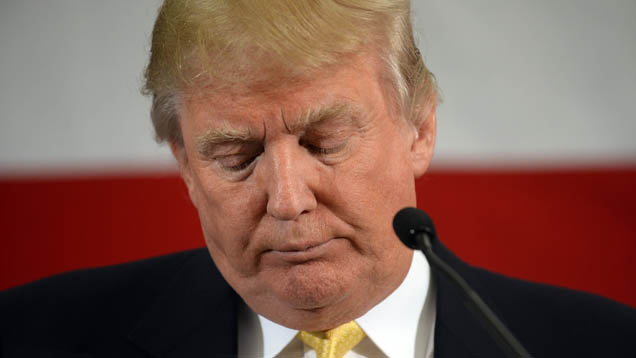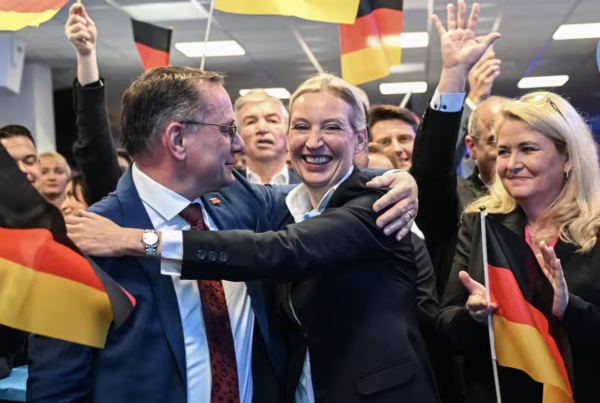By Mark Narusov
“It makes no sense for a nation to treat its enemies kindly and its allies harshly. Any nation that tries this foolish approach will see its enemies grow stronger and more dangerous, and will lose its allies when it abandons them.” — Michael Pregent
President Donald Trump delivered a long-anticipated speech on October 13. Vividly marking a fundamental departure from the policy of the previous administration, the president announced that he is unable to recertify the nuclear agreement with Iran, accusing the revolutionary dictatorship of spreading “death” and “destruction” all around the globe and laying out key points of a new strategy to counter the totality of threats coming from the Iranian regime.
This strategy has two principal goals: Contain Iranian geopolitical expansion and definitively cut off all paths for the regime to producing a nuclear weapon, which the current nuclear agreement does not. It becomes not much more than a piece of paper by 2031, when key restrictions on the Iranian nuclear program expire. The former would serve as the means to the latter, the administration’s assumption being that a campaign of economic and geopolitical pressure will force the Iranian regime back to the negotiating table to revisit the terms of the nuclear agreement.
The Trump administration has delivered on some of the tough talk. The day of the president’s address, the entirety of the Islamic Revolutionary Guards Corps — the organization responsible for upholding the Islamist nature of the Iranian regime and the export of its model abroad — was designated as a terrorist group. On other fronts, however, the situation looks exactly like you would expect with an executive like Donald Trump as president of the United States.
Three days after Trump’s speech, an alliance of Iraqi federal security forces and Iranian-controlled paramilitary units launched an offensive on the territories controlled by the Iraqi (Kurdistan Regional Government), occupying the region of Kirkuk and advancing further to Iraqi Kurdistan’s capital, Erbil.
During the days of the Cold War, the United States has had to compromise its liberal values on the altar of the defining goal of the state’s foreign policy in that period: setting up bulwarks against the spread of the USSR and its numerous proxies. Some of the dams the US propped up were democracies, while others were brutal dictatorships. No such compromise of values was necessary when it came to containing Iranian expansion inside of Iraq. While the Kurdish Regional Government is not a perfect democracy, it is immeasurably freer than the principal actor behind the offensive, the explicitly theocratic dictatorship of the Islamic Republic of Iran. The latter had already exported its Shiite caliphate model to parts of Syria, Yemen and Lebanon through its proxies, and now has put Northern Iraq in its crosshairs.
The centrality of the Iranian role in the Iraqi offensive is often underemphasized. As the leading British Middle East expert Kyle Orton clarified to me, “There is a great deal of popular hostility to the KRG holding Kirkuk and the other contested areas, and al-Abadi [the Iraqi Prime Minister] rode that, as he had to if he wants a second term. But this was instigated by Qassem Sulaymani [Head of the IRGC’s Quds Force, the Iranian state body in charge of exporting the Islamic Revolution], and the Baghdad government — whatever political benefits it derived from this — will in the medium and long term fall behind the Iranians in ideological and political terms.”
The United States decided not to act to defend its Iraqi Kurdish allies for two remarkably misguided reasons. First, for all of Trump’s desire to contrast himself to the last president, including on foreign policy, the administration has inherited an unhealthy obsession with the fight against the Islamic State at the disadvantage of other, arguably more important, goals in the region, such as establishing stable, legitimate and long-lasting forms of governance in the reconquered territories and yes, containing the chief sectarian actor in the region, Iran. With the fall of ISIS in Iraq and Syria in sight, the United States has become the only entity to not plan ahead and get well-positioned for the battles of influence that have already ensued between the victors.
Second, the administration is still committed to its “One Iraq” policy, the logic of which is bolstering the unity and strength of the Iraqi state to ensure stability in the region. It was appropriate and badly needed a few years ago, but since Obama’s disengagement from the country in 2011 and the subsequent de facto takeover by Iran, the pursued approach is destined to merely strengthen one of Iranian proxies.
Here was a perfect opportunity for the US to substantiate the bluster and the tough talk with concrete actions that would reestablish the weight of American threats and commitments in the eyes of enemies and allies alike after a decade of withdrawal and retrenchment. The Trump administration missed it, exposing itself as barely interested in a truly consistent implementation of its own Iran strategy.
Photo source: Getty Images
Other posts that may interest you:
- The Trouble with ‘Ecocide’
- Carbon dioxide removal – hit or miss?
- Local Victories for Turkish Opposition — A Sign of Hope?
- Are France and Japan a Mismatch Made in Heaven?
- A Reflection on Dark Tourism
Discover more from The Sundial Press
Subscribe to get the latest posts sent to your email.





